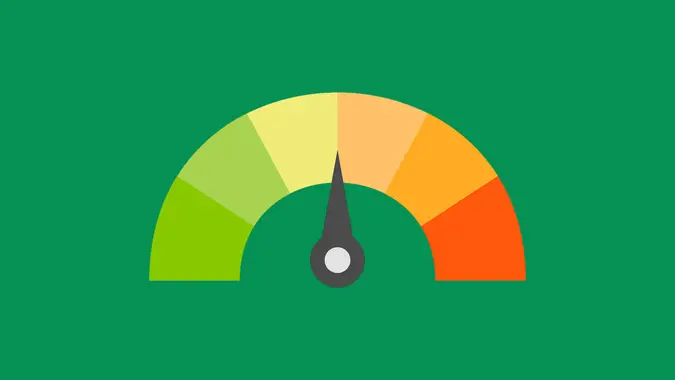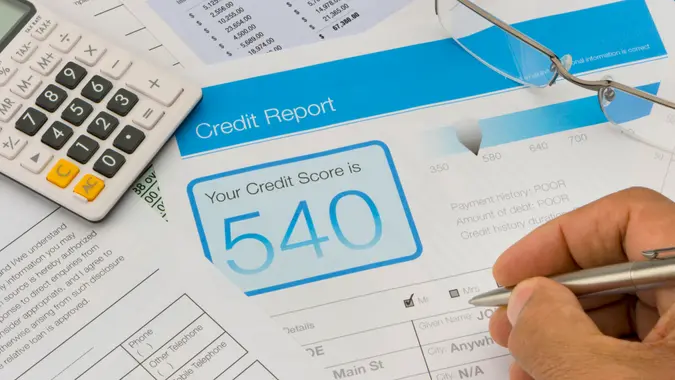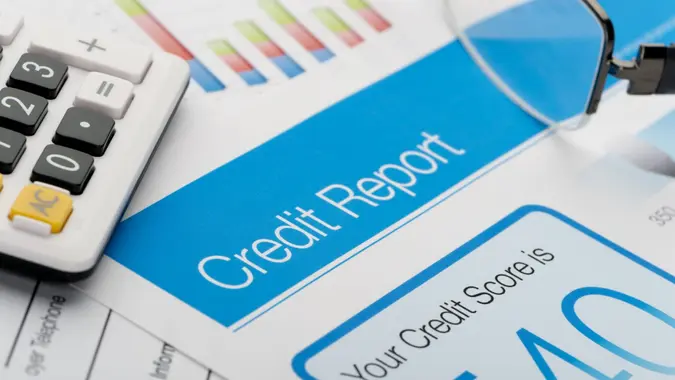How to Report Identity Theft in 5 Easy Steps

Commitment to Our Readers
GOBankingRates' editorial team is committed to bringing you unbiased reviews and information. We use data-driven methodologies to evaluate financial products and services - our reviews and ratings are not influenced by advertisers. You can read more about our editorial guidelines and our products and services review methodology.

20 Years
Helping You Live Richer

Reviewed
by Experts

Trusted by
Millions of Readers
It’s always stressful to find out that someone has stolen your identity. You might find unauthorized charges on your credit card or accounts you never opened. If this happens, taking quick action is the best way to minimize damage. The good news is that there are clear steps you can follow to report identity theft, protect your finances, and start the recovery process.
Signs You Might Be a Victim of Identity Theft
Identity theft isn’t always obvious. Sometimes, small warning signs can indicate a bigger problem. Here are some red flags to watch for:
- Bills or account statements for accounts you don’t recognize.
- Collection calls demanding payment for debts you never took out.
- A denied credit application when you have good credit.
- Charges you didn’t make on your bank or credit card.
- Letters about accounts or government benefits you never applied for.
If any of these sound familiar, it’s time to take action.
Step 1 – Contact Companies Where Fraud Happened
The first step is to contact the companies where fraud has occurred. Whether it’s a bank, credit card company, or loan provider, let them know you’re a victim of identity theft.
- Call the company immediately and explain the situation.
- Ask them to freeze or close affected accounts.
- Request the removal of fraudulent charges.
- Add extra security alerts or two-factor authentication to your accounts to prevent further unauthorized access.
Most financial institutions have fraud departments ready to help, so don’t hesitate to reach out.
Step 2 – Place a Fraud Alert on Your Credit Report
A fraud alert notifies lenders to take extra precautions before approving any new credit in your name. This can help prevent further damage if someone tries to open accounts using your information.
You only need to contact one of the three major credit bureaus–they will notify the others:
- Experian: experian.com/fraud
- Equifax: equifax.com/personal/credit-report-services
- TransUnion: transunion.com/fraud-victim-resource
Fraud alerts last for one year and are free to set up.
Step 3 – Get Your Free Credit Reports
Checking your credit reports is essential to spotting fraudulent activity. You can request free copies from all three credit bureaus at AnnualCreditReport.com.
When reviewing your reports, look for:
- Accounts you didn’t open.
- Hard inquiries from companies you didn’t apply with.
- Unusual balances that seem too high.
If you find any incorrect information, report it right away.
Step 4 – Report Identity Theft to the FTC
The Federal Trade Commission (FTC) provides official resources to help you recover from identity theft. Go to IdentityTheft.gov to file a report.
Once you submit your case, the FTC will create a personalized recovery plan. This official report can also be used as proof of identity theft when dealing with banks, creditors, and law enforcement.
Step 5 – File a Police Report (If Needed)
In some situations, you may need to file a police report. This is especially important if:
- The thief used your name during an arrest.
- A company requires a police report before they can process your fraud claim.
When filing a police report, bring your FTC Identity Theft Report along with any supporting evidence, such as fraudulent account statements or correspondence.
Protect Yourself After Reporting Identity Theft
Once you’ve reported identity theft, take extra steps to secure your personal information and prevent future fraud.
- Change passwords for all your financial accounts and email.
- Consider freezing your credit if you don’t plan to apply for loans or credit cards soon.
- Use a credit monitoring service to get alerts for suspicious activity.
- Don’t share personal information online, especially on social media.
These simple habits can go a long way in keeping our identity safe.
FAQ
- Who do I report identity theft to first?
- Start by contacting the company where the fraud happened. Then, place a fraud alert with a credit bureau and report the theft to the FTC.
- Do I need a police report to fix identity theft?
- Not always. In many cases, an FTC Identity Theft Report is enough. However, if fraud involves criminal activity, a police report may be necessary.
- Will reporting identity theft hurt my credit?
- No, reporting identity theft does not lower your credit score. In fact, taking action can help prevent further damage.
- How long does it take to recover from identity theft?
- The timeline varies depending on the severity of the fraud. Some issues can be resolved in a few weeks, while more complex cases may take months to fix.
 Written by
Written by 
























